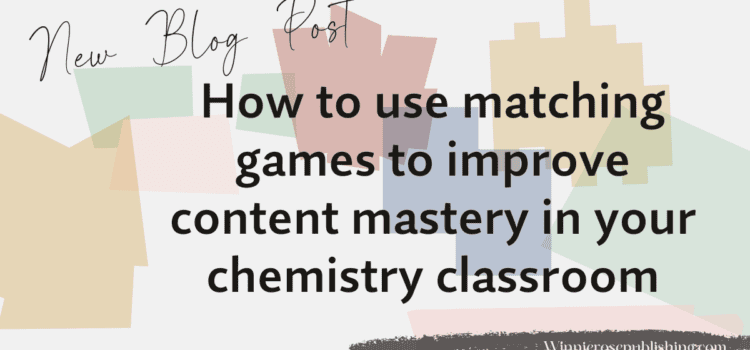
Many topics in class simply require lots of practice. Content mastery is critical to success on assessments and in future content in your course. Using matching games is one way to fit in more practice while still being fun in the classroom.
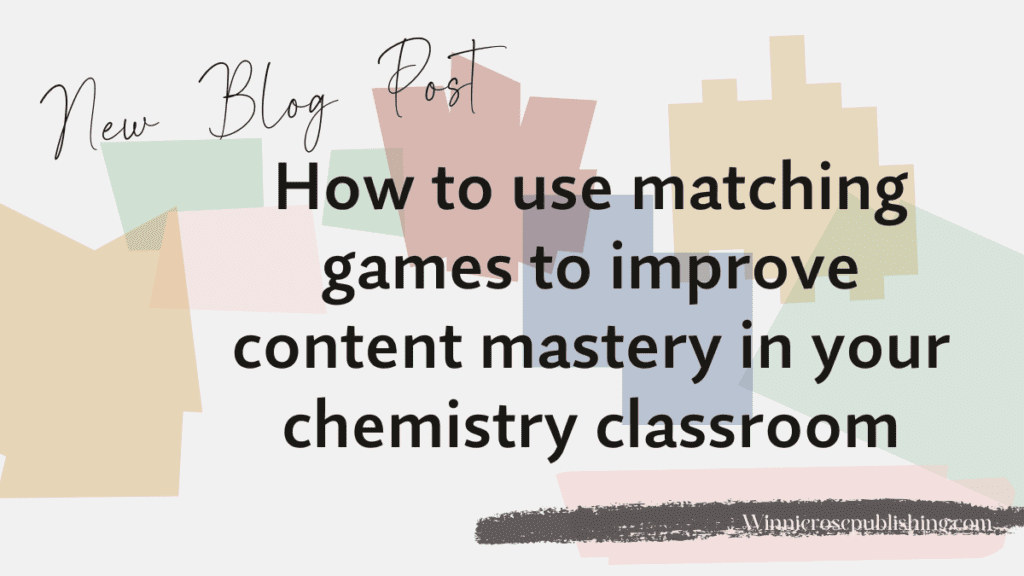
No matter how often you say it to your students, they must practice more. They need to work many examples of various types of problems to gain the confidence and mastery required to perform well. One way is the worksheet filled with dozens of random questions to practice a concept. I know your file cabinet is filled with these worksheets.
Alternatives to the Old-Fashioned Worksheet of Practice Problems
In previous posts, I discussed the value of real-world activities to engage students. When practice problems are created from real-world situations, the buy-in and cooperation is higher.
Students see the associations between what they are learning and the world around them.
This post addresses how to use matching games as a way to get students to work the necessary practice. The students are engaged while practicing the content. Some students will enjoy the game atmosphere and the competition to get the pairs matched together before their classmates.
Topics That Work Well as a Matching Game
Several topics work well as a matching game. Nomenclature is ideal, as there are dozens of possible formulas and names. Like this set of binary ionic compounds, shown in the picture below.
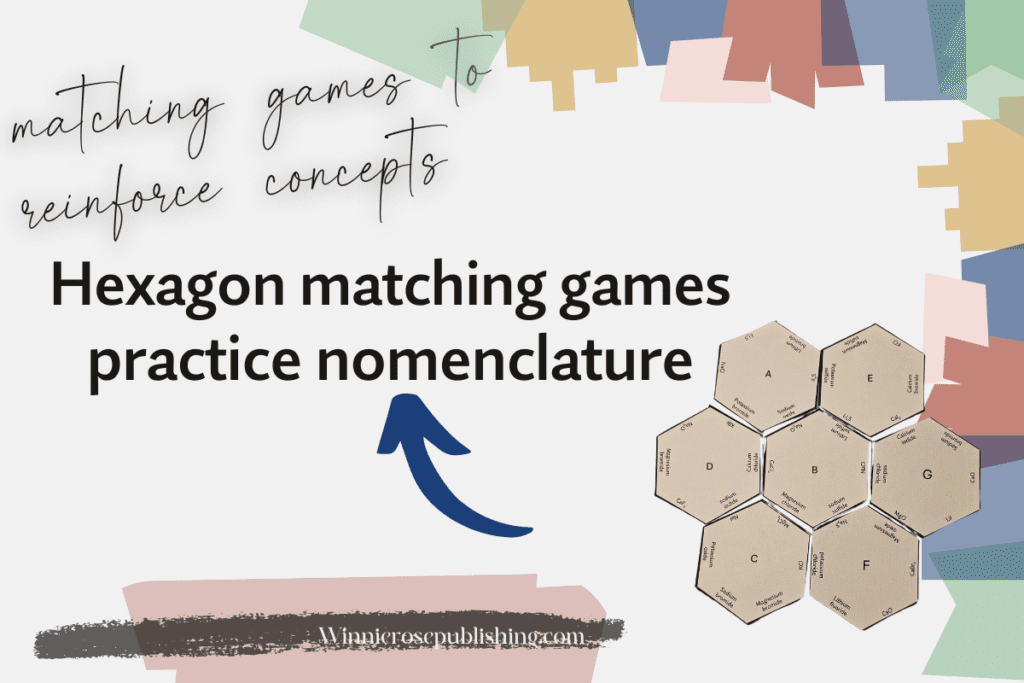
The names and formulas are on the edges of adjacent hexagons. When all the pairs are matched up properly, the overall arrangement is a triangle.
Another topic that would work well is acid-base conjugate pairs. The acids are on one edge of a card and the matching conjugate bases are on an edge of another card. The cards or tiles all need to match up all the pairs to get an overall shape.
You could imagine vocabulary terms and definitions. Or vocabulary terms and examples of the terms. I could imagine category names being matched up with examples that fit the categories.
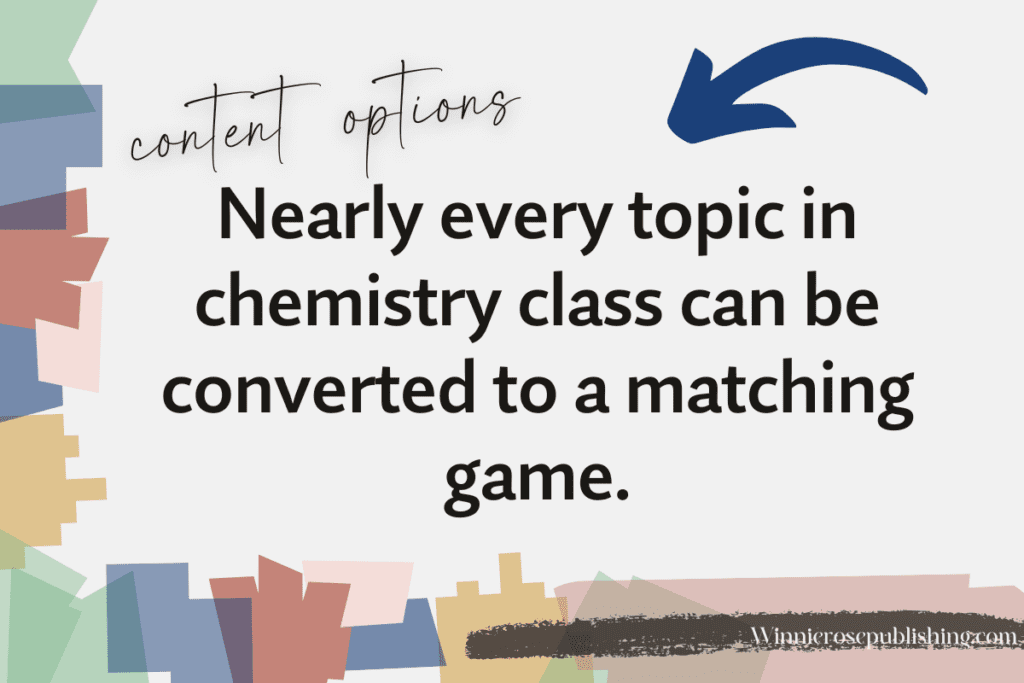
Styles of Matching Games
There are various options for shapes and styles of the matching exercise. The examples above are in the same style as tangrams, where the tiles are arranged to make an overall shape.
Another example of a format for matching games is a dominoes-style setup. Students in small groups lay down their dominoes to match up with pieces already shown on the table from a previous player. The students take turns laying down their pieces to match up with things already played until someone runs out of pieces to play.
Cort sorting activities are matching activities as well. The pile of cards needs to be sorted into categories and matched up with the proper terms.
Then of course, the matching memory game setup where all the cards are face down on the table in a grid and students take turns flipping over two cards at a time to get a matching set. The matching set does not have to be a pair of identical cards, they can be a formula and a name. Or an acid and its conjugate base.
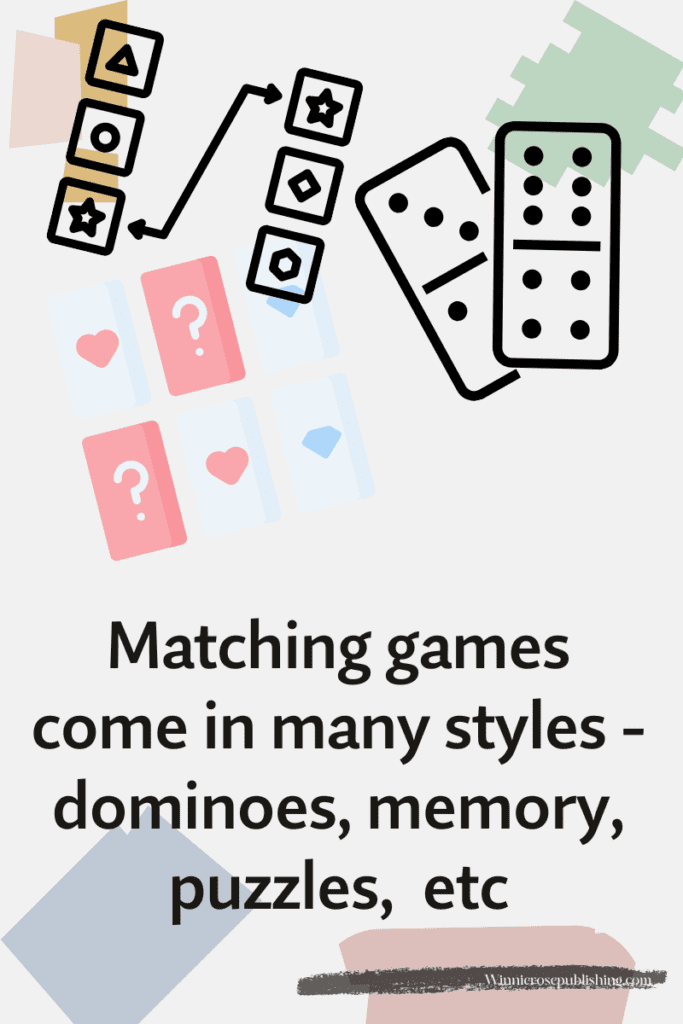
Impacts of using Matching Games in your Classroom
The possible impacts of using a matching game over a worksheet for practicing material for students’ learning are numerous.
- Students are interacting with each other and discussing the possibilities rather than just working alone on a worksheet.
- Suppose the matching is set up as a game, like dominoes or the memory matching game. In that case, there is a competitive feature to the activity that engages students differently than a worksheet where the only competition is earning the grade.
- If the matching activity is a puzzle type like a tangram there are problem-solving skills at work as well.
- Any of the matching activity styles involves a kinesthetic component which has been shown repeatedly to enhance and increase learning for students.
Specific Skills and Benefits of Matching Games and Puzzles
- Cognitive Development – students use more parts of their brain when doing a hands-on puzzle activity compared to when they complete a worksheet. They are making more connections in their brain as they integrate the concepts.
- Vocabulary Building – for matching games that feature matching vocabulary with examples or formulas with chemical nomenclature, they are improving their understanding of the vocabulary in the topic.
- Concept Reinforcement – matching games that practice nomenclature or acid-base conjugates provide the same extensive amount of practice and reinforcement as a classic worksheet. And at the same time, it is more fun.
- Differentiation – students can work at their own pace on the matching activity and in many cases they can discuss the concepts with you and their peers more easily than a worksheet you have assigned as homework
- Engagement and Motivation – games and puzzles are fun. Competition (at least the friendly sort) is fun too. I can definitively say that watching the students be engaged in a puzzle activity is fun and motivating for me too, as I have six classes a day doing the same things every period. Watching a kid be excited to learn is one of the greatest joys of teaching.
From a standpoint of prep work for the activity, that is minimal as well. Once the cards, tiles, or dominoes are printed and laminated, they can be used year after year with no additional effort. If you use a worksheet, that will need to be duplicated each time. The matching game can be treated as an ungraded formative activity. If you use a worksheet, you would likely need to grade that and perhaps provide an answer key at some point.
Student-Focused Instruction vs Teacher-Focused Instruction
Another advantage of a matching activity in your chemistry classroom is the student-centered focus, rather than a teacher focus. Students are playing the game or solving a puzzle at their own pace. They are communicating with peers and helping one another. They are building problem-solving skills. You are not lecturing but rather checking in with groups to help keep them on track as needed. The focus is on the student practicing the content and constructing their own knowledge rather than a focus on your group instruction. I am a bit old-fashioned and I use a combination approach. I will provide group instruction one day, then a student-focused hands-on activity at their desk the next, and then finally a lab experiment on another day. A student’s learning style can be covered at some point by using different approaches every day.
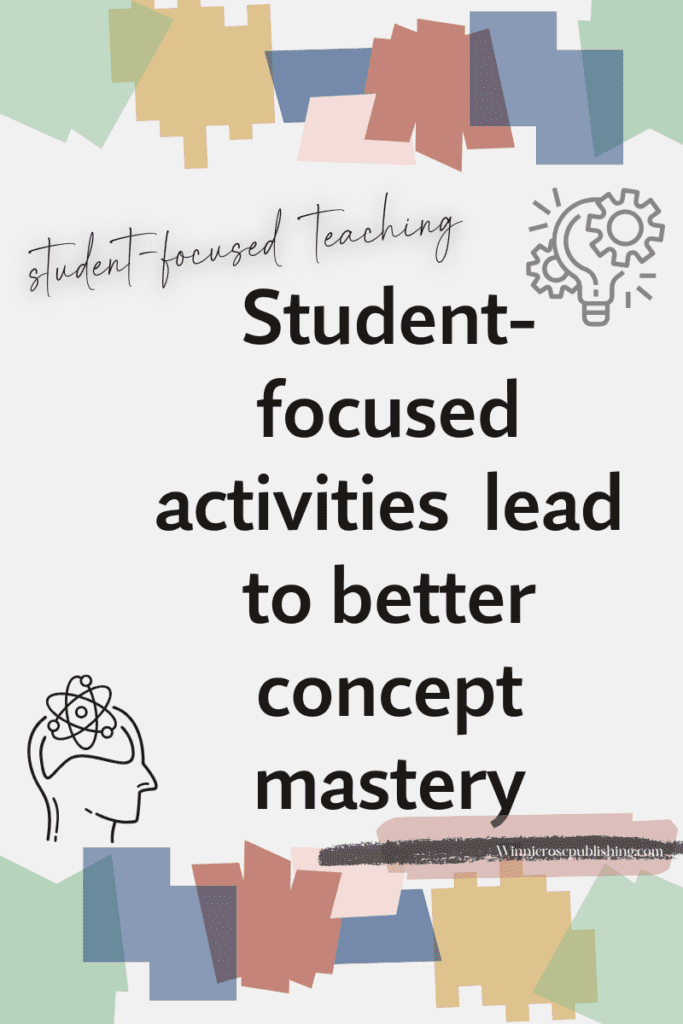
How to Implement Matching and Memory Games in Your Classroom
- Students will generally need some familiarity with the concepts in advance of the matching game. So on the day before your activity you may want to do some group instruction or use a POGIL (guided inquiry)
- Print the matching game tiles (pieces) – consider how many sets you need and what sized groups will work on the activity together
- Laminate
- Give students rules or guidelines – is it a tangram style that makes a particular shape, or is it more free-form like dominoes? Maybe it is a memory matching where all the cards are face down in rows.
- Decide if the goal is just to complete the activity or if you want to restrict the time to make it more challenging.
- Consider if you want prizes for completion or for winners of a game.
Below are some articles that describe additional ways to use matching game activities in your classroom.
- The memory game: making it meaningful – Laura Chandler’s Teaching Resources Blog discusses the use of matching game activities with younger kids
- Memory Games for the Classroom – Your Therapy Source Blog discusses the cognitive skill advantages to matching and memory games.
- Why Memory Games are Essential for Children’s Development: The Benefits Explained – Skool of Code Blog also discusses the cognitive benefits.
And here are some links to ‘easy to implement’ matching game activities for your high school chemistry class.
- covalent hexagons – names and formulas of covalent compounds on the edges of hexagon tiles
- binary ionic hexagons – practice simple ionic nomenclature with matching formulas and names.
- acid-base conjugate hexagons – formulas of acids and their conjugate bases on the edges of hexagon tiles.



